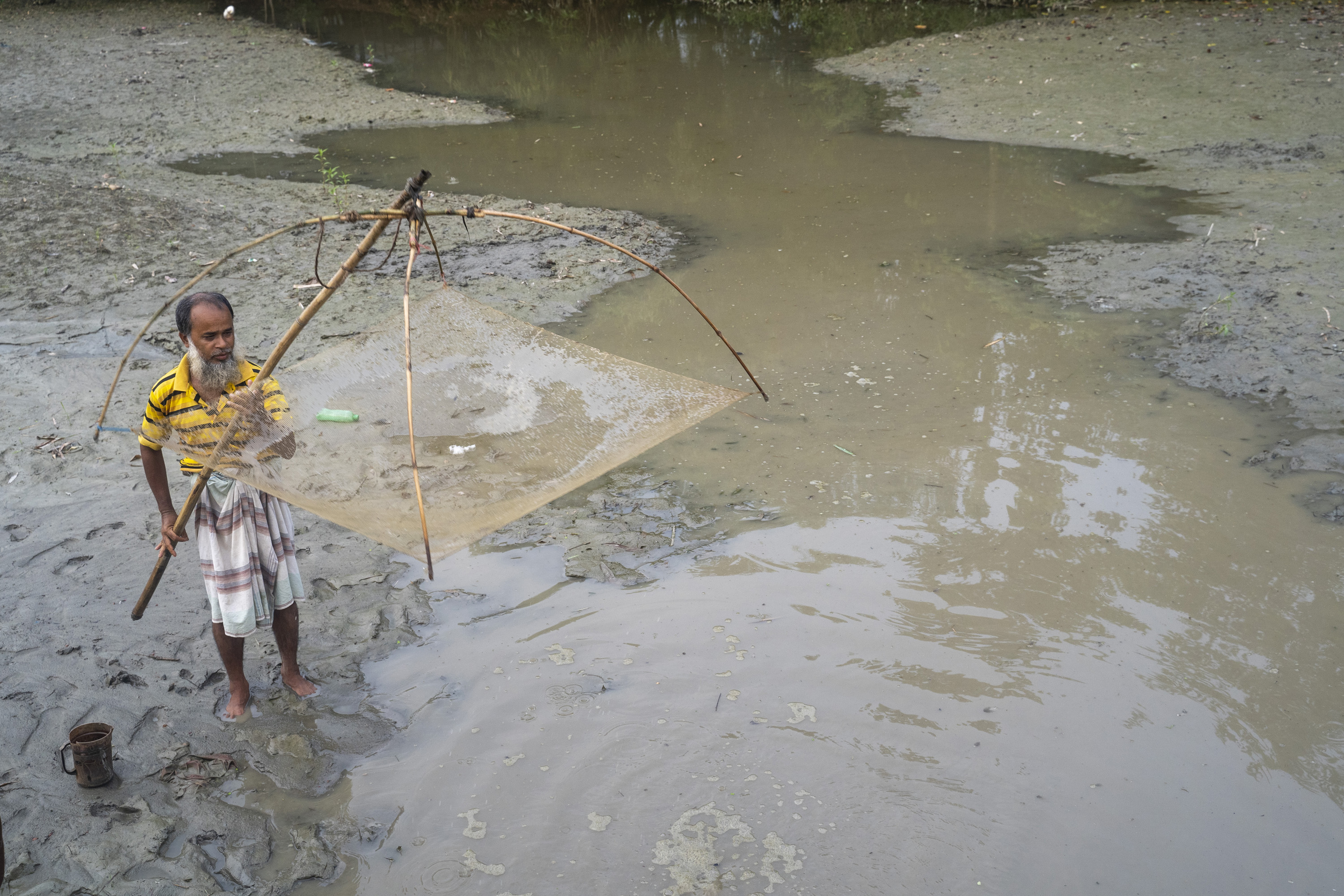Acting ahead of crises should become the new normal
FAO aims to protect vulnerable populations from disasters before they strike

Abdul Rob, a shrimp farmer, fishes beside an embankment where thousands took shelter after flooding in Bangladesh.
©FAO/ Saikat Mojumder
As Bangladeshi communities watched the waters of the Jamuna River rise on July 2020, the UN was rapidly allocating $5 million in relief funds to protect them from the inevitable impact of flooding. The process took less than four hours and would become the fastest release of humanitarian funds in UN history. That experience is one of the reasons why government ministers and UN agencies were meeting in New York on 9 September for the first event of its kind, to commit to acting ahead of crises.
FAO has been at the forefront of this new approach to disasters. In this Q&A, Dunja Dujanovic, FAO's Team Leader for Early Warning Early Action, explains why FAO is calling for anticipatory action to support communities that face increasingly frequent hazards.
Why has the UN convened this high level event?
Study after study that FAO has done has shown that communities gain far more from our investment if we don't wait for them to lose everything before we help. But it requires collective commitment to move the system as a whole in this direction. That's what we hope to achieve with this first-ever high-level meeting on the sidelines of the UN General Assembly.
How is anticipatory action different from traditional humanitarian responses?
What happens in a typical humanitarian emergency is that once people already feel the impact of a shock, let's say a drought or an outbreak of violence, the humanitarian community moves quickly to count how many people are in need, who is most in need and where they are. And from there, the whole process of planning and financing starts.
With anticipatory action this process is turned on its head, because it's about acting before that shock. It's about protecting people before disaster hits them hard. So we're trying to predict what the impacts might be with an event that hasn't happened yet or hasn't fully unfolded.
What's new about this? It is the systematic linking of risk analysis, actions and pre-arranged financing. That means we can make action plans ahead of time and the money is already set aside for them, so that we don't lose precious time and can intervene quickly as soon as the warning signs appear.
So, we are talking about managing disaster risk, not disaster impact. It doesn't replace the classic disaster response, but it is a fundamental component that was missing before.
What does anticipatory action look like when you apply it to agriculture and emerging food crises?We know that up to 80 percent of people who experience the worst kind of hunger rely on agriculture for survival. That means supporting farming families early so they can keep producing food and that is critical to preventing food crises.
For example, if data shows that there is a drought expected in a particular coutnry, we can distribute drought-resistant seeds or repair critical water infrastructure ahead of time in areas at risk to secure the harvest.
In a country were conflict is raging and the veterinary system has broken down, we can organize a vaccination campaign to prevent the spread of diseases that threaten the livestock that families rely on for food and income.
It's about more than just food security. We know that people who are facing food insecurity not only have to cut meals but also do things like pull their children out of school, sell off their land or migrate. Therefore protecting people's livelihoods has benefits that reach far into the future.
What do communities gain?
People who end up in the worst form of hunger are people who have exhausted their options to feed their families. They have lost or sold their assets and they are at the end of their tether.
Communities affected by frequent disasters are especially vulnerable because they are still trying to recover from the last shock when the next disaster hits.
Anticipatory action is about breaking that cycle: we don't allow people to become acutely hungry -- we move quickly to protect their livelihoods, their incomes and their food security. But we also uphold their dignity - we don't allow people to be stripped of the assets they need to recover. We don't allow them to become dependent on humanitarian assistance.
We put power back into the hands of people to protect themselves in the face of shocks.
What is moving anticipatory action into the mainstream?
We've had significant natural hazards in recent years and we are seeing an expansion of conflict. On top of these issues, we've had the COVID-19 pandemic, which has affected economies and people's ability to pay for food around the world.
As a result, the hunger trends are astonishing, with increasing numbers of people in acute hunger or even at risk of famine. So more people are asking themselves how we can support the most vulnerable in a future in which these trends are likely to continue or even worsen.
Anticipatory action is not the only way, but it is getting a lot of attention because more governments and agencies realise that we can protect more people and deliver better results for communities if we start managing disaster risks and not just impacts. We also see that it is a strategic and cost-effective way to spend taxpayer resources, by being proactive instead of waiting for shocks to become full-blown disasters.
Contact
FAO News and Media (+39) 06 570 53625 [email protected]
